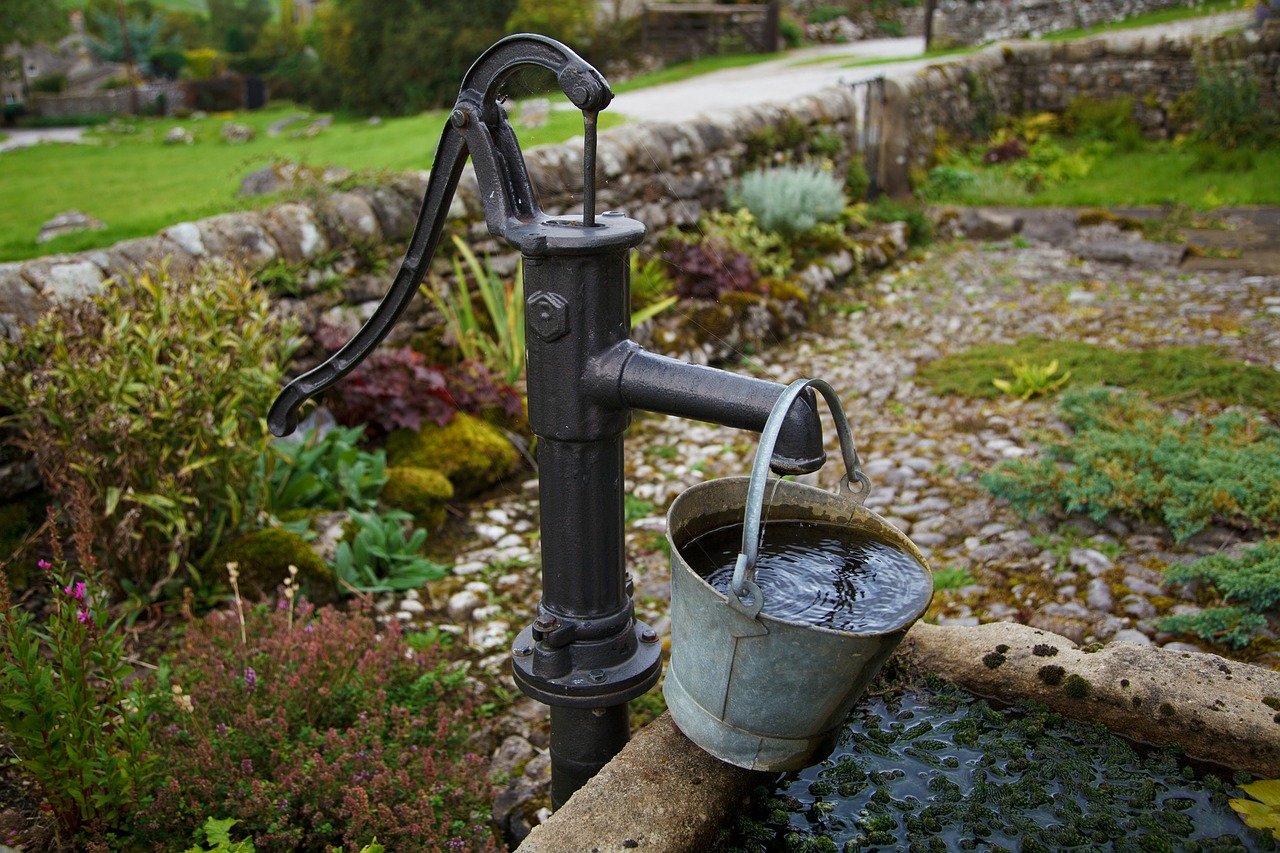 Earth & Space
Earth & Space
Groundwater pumping poses worldwide threat to riverine ecosystems
We pump too much water out of the ground, impacting our rivers worldwide. Our study estimates that almost 20% of the catchments where groundwater is pumped for drinking water or to grow food suffer from low flows - too low to sustain healthy freshwater ecosystems. This number is expected to increase to 50% by 2050.

We pump too much water out of the ground, impacting our rivers worldwide. In our study, we estimate that almost 20% of the catchments where groundwater is pumped for drinking water or to grow food suffer from low flows that are too low to sustain healthy freshwater ecosystems. This number is expected to increase to 50% by 2050.
Strong population growth and economic development over the last 50 years have led to a significant increase in freshwater demands worldwide, mainly for irrigating food crops. Most freshwater that we can use for drinking or irrigation runs below our feet in underground aquifers. This groundwater plays a critical role in rivers worldwide, keeping them running even when droughts bring their levels low.
Currently, about half of the world's irrigation water is pumped from groundwater. In many irrigation areas, more groundwater is pumped than what is naturally replenished through precipitation. This is causing falling groundwater levels worldwide.
An essential consequence of falling groundwater levels is a reduced flow, or a complete stop, of groundwater to streams and rivers. This is a problem, particularly during the dry season, when river flow almost entirely depends on the inflow of groundwater. The reduction of groundwater inflow poses a significant threat to riverine ecosystems. Water levels decrease, and water temperatures will rise, likely too much for organisms living underwater to survive.
In our study, we used a newly developed global-scale hydrological model to determine the extent to which freshwater ecosystems have been (and will be) affected by groundwater pumping. With this, I was able to calculate the flow of groundwater to rivers all over the world. This allowed me to study how a reduction of this groundwater flow, when it is pumped, impacts river flows. The model calculations provide a glimpse into the future on what will happen to our rivers and streams if we keep pumping groundwater as we do now.
Our calculations show that almost 20% of the regions where groundwater is pumped currently suffer from a reduction of river flow, putting ecosystems at risk. We expect that by 2050 more than half of the regions with groundwater abstractions will not be able to maintain healthy ecosystems.
The most striking insight is that only a small drop in the groundwater level will already cause these critical river flows. Moreover, the impact of groundwater pumping will often become noticeable after years, if not decades. This means that we cannot detect the future impact of groundwater pumping on rivers from the current levels of groundwater decline. This turns unsustainable groundwater pumping into a ticking time bomb for life in streams and rivers.
We already see the negative impact of groundwater pumping on river flows. Hotspots include the southern Great Plains of the US, California's Central Valley, parts of Mexico, and the Upper Ganges and Indus Basins in Asia. If groundwater pumping continues as it is now, we expect negative impacts to occur in Southern and Eastern Europe, North Africa, and Australia in the coming decades. Climate change will accelerate this process.
For our projections of the future, we only took account of climate change and assumed that the intensity of groundwater pumping activities remains the same as those of the last ten years. However, it is much more likely that groundwater pumping will increase due to population growth and economic development. Our estimates of future effects of groundwater pumping on freshwater ecosystems may even be on the conservative side.
Although seeing the consequences of groundwater pumping on the environment globally is rather shocking, I am still optimistic about the future. I hope we can raise awareness of a slowly evolving crisis. A reduction of groundwater pumping will be the only way to prevent adverse impacts. At the same time, global food security should be maintained. Groundwater should be used more sustainably. It is vital to develop more efficient irrigation techniques worldwide and experiment with crops that use less freshwater or can live in salty water.
Original Article:
de Graaf I, Gleeson T, (Rens) van Beek L, Sutanudjaja E, Bierkens M. Environmental flow limits to global groundwater pumping. Nature. 2019;574(7776):90-94.Next read: High extinction risk for wild coffee species and implications for coffee sector sustainability by Aaron P. Davis
Edited by:
Massimo Caine , Founder and Director
We thought you might like
How do plants breathe?
Nov 22, 2017 in Plant Biology | 4 min read by Richard Morris , Hugh WoolfendenSnakes in Decline: Not as Good as You May Think
Nov 2, 2020 in Evolution & Behaviour | 3.5 min read by Julie M. Ray , Graziella V. DiRenzoEnvironmental sustainability of nationally recommended diets
Jun 14, 2018 in Health & Physiology | 3 min read by Paul BehrensMore from Earth & Space
Discovery of the first radiation belt beyond the Solar System
Jan 27, 2025 in Earth & Space | 3.5 min read by Juan Bautista Climent OliverOne million (paper) satellites
Jan 24, 2025 in Earth & Space | 3 min read by Ewan Wright , Andrew FalleVolcanic Ash: A Nutrient Boost for Reef-Building Corals
Sep 18, 2024 in Earth & Space | 4 min read by Frank Förster , Tom SheldrakeAmmonia Energy: A Call for Environmental Awareness
Aug 29, 2024 in Earth & Space | 3.5 min read by Matteo Bertagni , Robert Socolow , Amilcare PorporatoLikely increase in coral thermal tolerance at a Pacific archipelago
Dec 29, 2023 in Earth & Space | 3 min read by Liam LachsEditor's picks
Trending now
Popular topics


